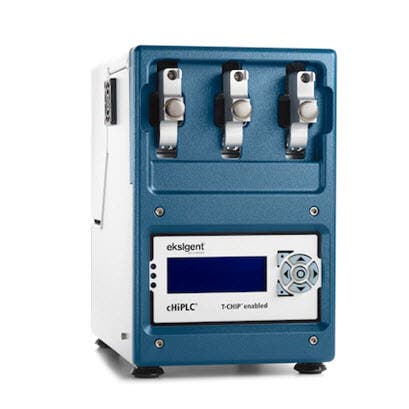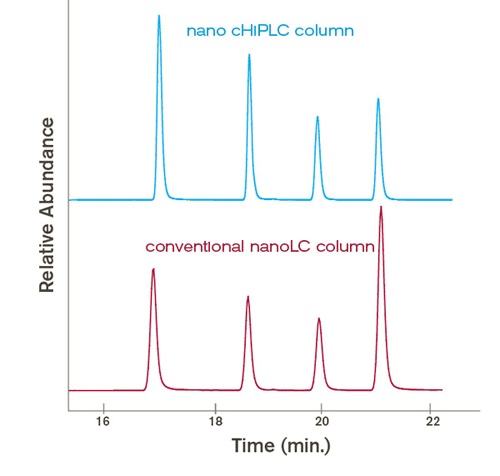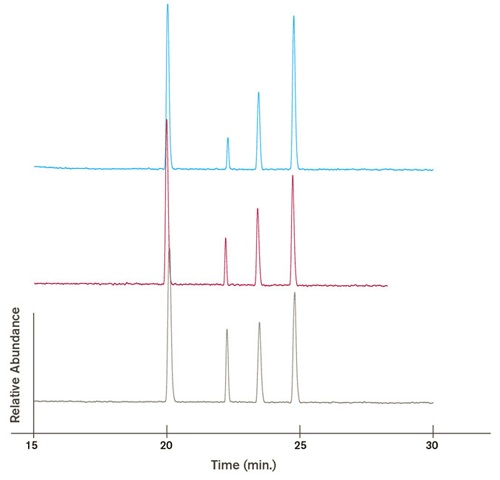For research use only. Not for use in diagnostic procedures.
The cHiPLC® system is a chip-based platform that, in combination with the nanoLC 400 system, delivers superior sensitivity, column-to-column reproducibility, and exceptional ease of operation.
The cHiPLC system is a "docking station" for up to three microfluidic chips. The system's flexible design and built-in 10-port nano valve allow for easy switching between different types of experiments such as direct injection and trap-loading.
Chips containing a nanoLC column, microLC column, or trap column can be exchanged in seconds. A perfect dead-volume-free connection is made every time as the cHiPLC column or trap column is automatically aligned with a special connector chip.
All alignment is achieved through the use of highly reproducible microfabrication techniques similar to those used in the microelectronics industry. Additionally, these techniques are used to define fluidic paths and to create a microfabricated weir structure for stationary phase particle retention. Chips are temperature controlled to guarantee reproducible retention times and improved separations.


